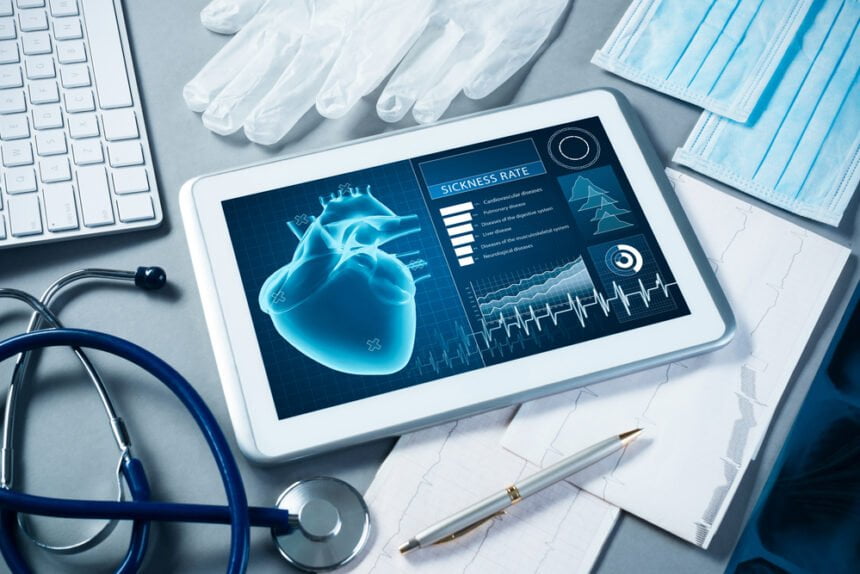In the 21st Century, we have seen numerous innovations. Some of the most striking ones are in the medical industry. We have found ways to digitize medical-related needs to keep us on track and updated. Therefore, it should not be a surprise to hear that the global medical devices market was worth nearly $450 billion in 2019.
Medical innovations fundamentally change healthcare and help us take a different approach to handling and using medical data. A company producing software undergoes a digital transformation that compliments the entire process. Various aspects of a company are affected and transformed into management criteria. As a result, we can collect, analyze and evaluate data for medical records and history.
Digitization of the Healthcare industry
Technology and digitization have had a massive impact on the healthcare industry. For example, the medical device industry has taken a digital step towards increasing the performance ratio and helping patients be machine free. Healthcare industries are adapting by using new technology to monitor patients, telemedicine, plan schedules, and perform medical imaging. Some of the technologies changing healthcare include the following
- Internet of Medical Things (IoMT): With advanced technologies and real-time data collection, the manufacturers have scope for improvements. The feedback, analyzed rectification, usage insights, providing interoperability needs, and understanding of their environment give them enough data for innovation and flexibility.
- Modern Engineering: With AI, ML, and other modern advancements, the speed of medical device development and its conceptualization has increased substantially, giving its designers a better ergonomic area and endurance. There is no denying the fact that AI technology is changing the future of healthcare forever.
- Secure Cloud Usage: With the development and increased security in Cloud storage, we see adequate reliability in how the medical industry uses it to store and save medical data. In addition, it is easily accessible anytime through software and medical applications. The cloud has helped with the adoption of telemedicine, which was used by 37% of adults in 2021.
How medical devices use software for healthcare
Undoubtedly, the healthcare industry benefits from medical device software development and its usage. However, SaMD is developed to act as medical hardware without the actual machine. It saves, collects, and evaluates data, medical records, schedules, and other medical functions that it is built to support. Here are some facts about SaMD:
- As it can perform medical functions, it is used to treat, diagnose and prevent illness by keeping a record and performing In-vitro diagnostic (IVD).
- These are generally used with nonmedical hardware or computing systems and can also be used with another medical device when needed.
- A mobile App also acts as software for medical usage. It delivers medical purposes through intended devices without needing the actual hardware.
Key Benefits/Uses of Software as a Medical Device
Software has led to improvised and better alternatives to care, regulation, and faster recovery with a digital benchmark in the medical industry. Some beneficial software includes:
- RPM software: Remote patient monitoring software is trendy nowadays because organizations and health officials can deliver care and information where patients are. This accelerates medical care by providing more patient-centered and improved solutions.
- Surgical planning software: A 3D way of rendering images that help surgeons plan and perform surgeries as the image is captured by a scope camera and the exact is 3D printed to understand better a speculated complex anatomy.
- Telemed software: the UK has seen the most frequently used Telemedicine software than other countries. It benefits the users with its numerous features that are present online whenever required.
Similarly, there are other uses and benefits, such as Medical Imaging software, Computer-aided detection software, etc.
A few companies that understand the perspective and adding to the value of digitizing the medical sector and promoting it to production include:
- Medtronic
- Siemens Healthineers
- Mindmaze digital therapies
What concerns are found in SaMD?
We are constantly going through updates in the Medical field, which include new software, devices, and innovative ideas to help patients. However, a few drawbacks and concerns still need mitigation with time.
- Concerning SaMD, it is hard to clarify devices or software that serve the intended purpose and what constitutes its qualification.
- It is only possible to find the manufacturers as software is developed and deployed in multiple platforms and sources.
Conclusion
Clarification in traceability and efficiency advancements are vital when producing and releasing such SaMD. Digital solutions encourage a flexible workflow and added care to the health industry. These implementations have reaped several advantages since they came into knowledge and continue to improve further with modern technology.

